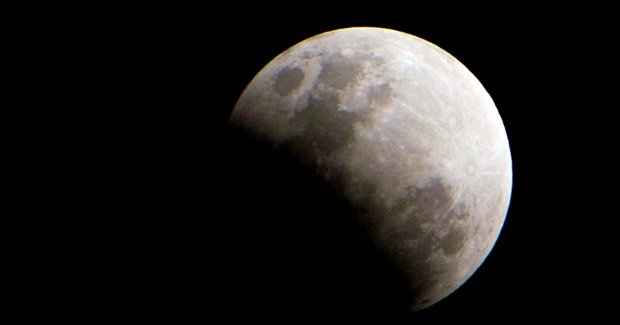Lunar eclipse a sight to see

AUSTRALIAN STAR GAZERS WERE up late on Saturday night to witness a partial lunar eclipse as half the Moon vanished into the night sky. The spectacle was a major event on the lunar calendar, marking the first of two lunar eclipses this year.
The partial eclipse began at 8:16 pm AEST on the east coast of Australia and while half the moon had disappeared by 9.38pm.
A partial lunar eclipse occurs when the Moon is not completely covered by the Earth’s shadow.
Unlike solar eclipses that can be seen only from specific locations, lunar eclipses can be observed anywhere on the night side of the Earth and can last several hours.
According to Dr Stephen Hughes from the Queensland University of Technology there can be a maximum of three lunar eclipses per year. “Each month the Moon is in the right position for an eclipse – but mostly it passes above or below the Earth’s shadow. Sometimes it just touches on it,” he said.
Total eclipses take place on a full Moon when it is entirely covered in the Earth’s shadow. The red colour of the moon often seen during a total lunar eclipse is caused by the light refracted by the Earth’s atmosphere. This light is a combination of all the sunrises and sunsets occurring on Earth at the time of the total eclipse.
“For Australia, this time of the year is best for lunar eclipses. During the winter months of June and July, the Moon is higher up in the sky and easier to see.”
The next total lunar eclipse will happen on the 21st of December, which will be able to be seen from eastern Asia, Australia, the Pacific Ocean and the west coast of the Americas. On July 11, there will be a total solar eclipse over the South Pacfic.

